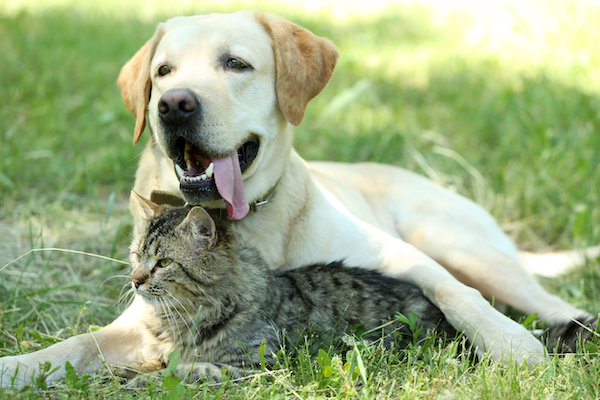For many Americans, their pets may as well be their children—and they’d do anything to ensure their health. In fact, according to the latest ValuePenguin (owned by LendingTree) survey of nearly 2,000 U.S. consumers, pet owners spend over $1,500 a year on medical care for their furry friends.
Having a pet—particularly a dog—is common in the U.S. Three-quarters (75%) of Americans have at least one pet. Overall, 57% of respondents report owning a dog, followed by cats (37%) and fish (7%). I own a dog myself—a beagle mix named Boomerang.
The 75% of Americans with at least one pet report spending an average of $1,507 a year on medical care. However, 76% of pet owners would spend much more and even take on debt if it meant saving their pet’s life.
The millennial generation, born between the early 1980s and the late 1990s and facing a variety of cost-of-living pressures, appear to be having fewer children than their predecessors. They are, however, particularly keen to look after their four-legged friends. This, coupled with a general rise in pet ownership among wealthier households—turbo-charged further by the pandemic—is proving to be a boon for animal health businesses.
Americans spent nearly $36 billion on vet services and clinic product sales in 2022 alone, according to the American Pet Products Association (APPA).
This is great news for the providers of veterinary medicines…

Especially Zoetis (ZTS), the one-time spinoff from Pfizer (PFE). Let’s take a closer look at the company.
Zoetis: Global Leader in Veterinary Medicine
Zoetis is the world’s largest pure-play animal health company, with its products sold in more than 100 countries.
The company discovers, develops, manufactures, and commercializes vaccines, medicines, diagnostics, and other technologies for companion animals and livestock. It generated $8.1 billion in revenue in 2022, making it the market leader. Products for companion animals, primarily dogs and cats, represented 64% of sales in 2022, up from 60% in 2021.
It benefits from broad diversification across product categories and customers. It has a wide range of products, including anti-infectives, vaccines, medicated feed additives, and other pharmaceuticals for cattle, swine, poultry, sheep, fish, and companion animals.
This diversification enables Zoetis to offset weak sales in one segment with stronger sales in others. The diversification extends geographically as well, with nearly half of the company’s revenues generated internationally.
My dog gets one of Zoetis’ meds monthly—Simparica Trio—for protection against heartworm, ticks, fleas, roundworms, and hookworms. The drug also is FDA-approved to block infections that may cause Lyme disease by killing deer ticks. Soon after adopting him from a shelter, Boomerang got some unidentified tick-borne infection. He has been on Simparica ever since.
The company is doing quite well, boasting a return on equity (RoE) of more than 40% each year since 2016.
Despite being very profitable, Zoetis intends for margin expansion to play a more important role in supporting medium-term earnings growth than sales alone. This growth, as well as share buybacks, helps support forecasts of double-digit earnings growth in the years ahead. FactSet analyst consensus puts EPS growth at 11.2% for Zoetis’ next full financial year, followed by 11.9% the year after.
Note: FactSet and other data on Zoetis can be found at Magnifi right here.
Zoetis’ Next Big Moneymaker
One major focus for Zoetis is the recent U.S. launch of Librela, a treatment for osteoarthritis in dogs, following an initial rollout in Europe. Zoetis has high hopes for the product, expecting it to aid with margin expansion once it reaches scale. A similar product, known as Solensia, is now available to treat cats with chronic pain conditions. The company hopes that these two products alone can ultimately deliver $1 billion in annual revenues, despite the current market size for this type of product being just $400 million. These drugs are indicative of the humanization of pets, as owners increasingly think of their pets as family, and therefore see health treatments as essential, not discretionary, expenditures.
The aforementioned Simparica Trio remains one of Zoetis’ most successful products. Its revenue growth remains strong, rising 20% year on year in the latest quarter. The company sees its pet business as offering the most potential for future growth, despite its existing dominance in some segments. For example, according to investment bank William Blair, Zoetis enjoys a 95% share of the $1.4 billion pet dermatology market—with the canine dermatitis drugs Apoquel and Cytopoint serving as the stars of its portfolio.
The likes of Simparica Trio mean the company now controls nearly one-third of the larger pet parasiticides market, estimated to be worth $6.3 billion. If the likes of Librela can help Zoetis continue to deliver on its enviable track record of margin expansion, its current forward price/earnings ratio (P/E) in the high 20s may prove to be cheap.
Since spinning off from Pfizer, Zoetis has consistently reached commercial success with innovative therapies and preventative products, becoming the dominant force in animal drugs. I believe its pet care segment will continue to grow, and account for 75% of revenues within a few years.
And since the animal health industry lacks large payers like Medicare, single-payer governments, or large insurance companies, Zoetis will maintain significant pricing power.
Although patents are not essential for maintaining a product in the animal health industry, at least 20% of its revenue comes from products protected by patents that allow Zoetis to charge a premium price and insulate it from competition.
Its stock is up 17% over the past year and 23% year-to-date. ZTS is a buy anywhere under $187 a share.





